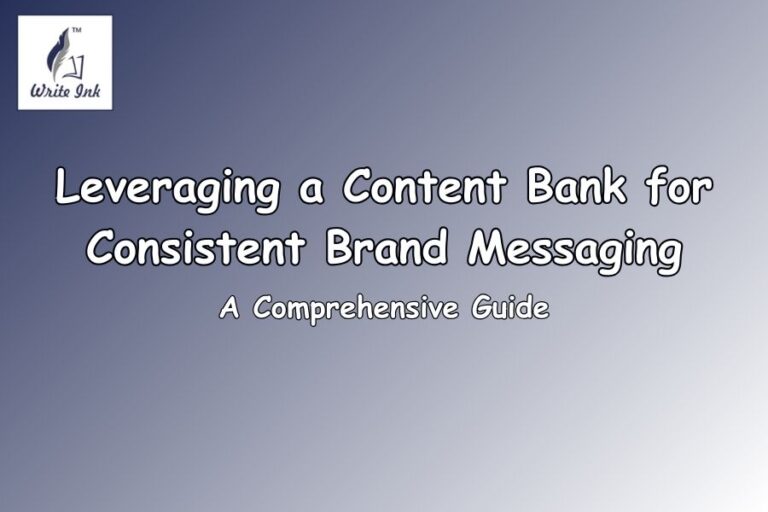Effective Content Strategy for Social Media Platforms | Boost Your Brand
In this article, we shall talk about content strategy for social media for a brand’s social media platforms. A social media content strategy is a roadmap to setting objectives, planning, making and publishing content, and tracking its performance while keeping target audience and business goals in mind.
Importance of Content Strategy in Social Media
One of the popular places for content and one of the most effective ways of building brand awareness is social media. So efficient social media handles for your brand are a must, but for that, you need content strategy social media— a strategy for producing effective social media content. Without a content strategy, you may post sporadically while your audience loves to see regular content. With a strategy, you can plan your posts and share them on time, while without it, you may waste time figuring out what to post and may get late. Social media is not just about posting content; it is about understanding your target audience and building a connection with them, and a strategy focussing on this can help you drive ROI for your business.
Objectives of an Effective Content Strategy for Social Media
A content strategy for social media has the primary objectives of producing relevant content, inducing target audience engagement in the form of likes, shares and comments, and building a social media following, brand awareness, trust, etc. These short-term objectives are in line with the brand’s business goals.
Understanding Your Audience

Defining Target Audience Demographics
The first step in your content strategy for social media is knowing who your target audience is and what kind of content they prefer. For this, use Google Analytics (or a similar tool), which shows audience demographics by age, gender, location, and language.
Analysing Audience Behaviour on Social Media Platforms
Analyse audience behaviour through their activity on your posts (likes, comments, etc.) and see which kind of post is the most popular. Instagram, Facebook, and LinkedIn insights also provide audience information, such as how people found your content. This analysis will help you to create a better content strategy for social media in the future.
Setting Clear Goals and Objectives
SMART Goals Framework
Your goals are what you want your business to achieve through a social media content campaign. They should follow the SMART framework by being Specific, Measurable, Attainable, Relevant, and Time-bound (SMART). There are other ways to implement content strategy for social media, but we recommend the SMART framework.
Aligning Goals with Business Objectives
Social media goals should be in line with larger business objectives. For instance, if your business objective is brand awareness, your social media goals could be:
- Get x% more traffic from social media over the next three months.
- Get x% increase in social media followers.
- Get more engagement on posts.
Your current content strategy for social media should be aligned with your Business Goals.
Researching Platform-Specific Best Practices

Overview of Major Social Media Platforms
The major social media platforms for marketing your brand are Facebook, Instagram, Twitter (now called X), LinkedIn, and TikTok. Each has its platform-specific algorithms, requirements, preferences, and trends. So, you have to make platform platform-specific content strategy for social media.
Platform-Specific Content Preferences and Trends
- Facebook – Videos work well on Facebook, and users prefer to watch them.
- Instagram—Known for its visual element, Instagram allows you to use photos and graphics to engage with the target audience. Instagram story features, reels, and meme culture are the best ways to engage with the audience.
- Twitter (X) – X is for posting snippets for readers who want stuff in brief. GIFs work well on X.
- LinkedIn—LinkedIn demands more professional and jargon-oriented narratives for professionals with a business mindset. Formal language, posters and graphics, and glimpses into your brand’s behind-the-scenes and workplace culture are in vogue on LinkedIn.
- TikTok—TikTok’s video-sharing feature serves as a unique marketing channel where brands can showcase product tutorials, join challenges, jump on trends, and captivate their audience.
Content Ideation and Creation
Generating Content Ideas Aligned with Audience Preferences
One way to generate ideas for posts is to analyse hashtags. You can look at your competitors’ posts and see which ones they are using and then make a list of hashtags you could use. Search those hashtags, see the trending posts that have used those hashtags, and take inspiration from that. Also, look at your rivals’ posts to get an idea of the kind of content that is working.
Creating Engaging and Shareable Content Formats
There are four types of content/posts that you can make: promotional, educational, inspirational, and entertainment posts.
Depending on your product, audience, and social media platform, you can plan a customised content strategy for social media and use the following content formats: static posts, carousels, videos, reels, reviews, or questions/polls.
The purpose of creating and reviewing your social media content strategy is to understand what kind of content is working for you and how you can enhance it.
Content Calendar Planning and Scheduling

Importance of Content Calendar in Social Media Strategy
Making a content calendar helps you manage the numerous content ideas flying around in your brain and schedule which posts go out when. It ensures timely and consistent content posting on all platforms and aids in deciding the most apt time to share content.
Tools and Techniques for Content Scheduling and Automation
The best tool for making a calendar is a spreadsheet, where you can list the types and topics of posts that you want to create and share weekly or monthly.
Monitoring and Analytics
Tracking Key Metrics for Social Media Success
Post your content strategy on social media and content campaigns. Revisit your goals set in the beginning and see whether your campaign has met those goals. Analysing social media traffic, followers, engagement rate, and social media insights can help you gauge whether your campaign was a success or not.
Adjusting Strategy Based on Performance Insights
Based on the results, adjust your content strategy for social media accordingly. For example, you can make more of those posts that work.
Community Engagement and Interaction

Building Relationships with Followers
It is essential to build a relationship with your followers and produce content that they really like. Know their opinions through polls and value them. It helps build trust with the brand.
Responding to Comments, Messages, and Feedback
Respond to your audience’s comments and messages as it makes a good impression, makes them feel valued and attracts them to your brand.
Integration with Overall Marketing Strategy
Ensuring Consistency Across Marketing Channels
When marketing through different social media channels, content strategy social media should ensure consistency across all of them. It should not be like you are posting regular content on your Instagram and Facebook handles but nothing worthwhile on your LinkedIn or TikTok. This shows a lack of meticulousness on your part and may affect your brand marketing.
Leveraging Social Media Content for Cross-Promotion
You can cross-promote on social media by collaborating with other brands or individuals and promoting their products on your channels while they promote yours to reach a larger audience across social media platforms.
FAQs: Frequently Asked Question
What is a social media content strategy?
A social media content strategy is a plan that outlines the objectives, planning, creation, publishing, and tracking of content on social media platforms. It aims to align with business goals and engage the target audience effectively.
Why is content strategy important for social media?
A content strategy ensures consistent and timely posting, aligns with business objectives, and helps build a connection with the target audience. It also enhances brand awareness and drives ROI for the business.
What are SMART goals in a social media content strategy?
SMART goals are Specific, Measurable, Attainable, Relevant, and Time-bound. They help in setting clear and achievable objectives for your social media campaigns that align with your business goals.
How can I create engaging content for different social media platforms?
Understand each platform's preferences and trends. For example, use videos on Facebook, visuals on Instagram, short snippets on Twitter (X), professional content on LinkedIn, and trending videos on TikTok. Tailor your content to fit each platform's unique style.
Conclusion

We have discussed in detail the elements of an effective social media content strategy. I hope you now have a clear idea of how to create one for your brand. If you have any more questions, visit our website.
Image Reference: Freepik
Disclaimer: All trademarks, logos, and brand names are the property of their respective owners. All company, product, and service names used in this website are for identification purposes only. Use of these names, trademarks, and brands does not imply endorsement.







